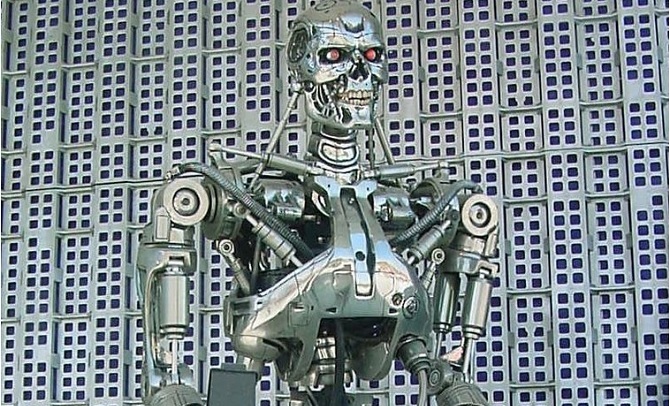
Robotics is an area of engineering and science that encompasses electronics, mechanical engineering, and computer science, among other disciplines. This department is concerned with the design, building, and use of robots, as well as sensory feedback and data processing.
In the coming years, these are some of the innovations that will replace people and anthropogenic factors. These robots are planned to be utilized for a variety of tasks, however, they are currently being used in sensitive areas such as bomb identification and deactivation.
Robots can take on any shape, although many of these have a human-like look. Robots that have taken on a human look are such as to walk like people, speaking, think, and, most essential, do everything a human can do. Bio-inspired robots are the majority of today’s robots, which are influenced by the environment.
Issac Asimov, a science fiction novelist, claimed to be the first to term robotics in a shorter tale written in the 1940s. Issac proposed three principles for guiding these types of robotic robots in that scenario.
Issac’s Three Laws Of Robotics States-
- Humans are never in danger from robots.
- In the case of breaking the law, robots will follow human commands.
- Without breaching other criteria, robots will protect themselves.
Scope And Limitations Of Robotics
Modern devices are robots that are trained to make selections on their own and are utilized to do advanced tasks. Whenever constructing a robot, the most crucial suggestion is what function the robot will work and what the robot’s constraints are.
Whenever constructing a robot, the most crucial suggestion is what function the robot will work and what the robot’s constraints are. Each robot has a fundamental layer of difficulty, with each level having a scope that restricts the functions that may be done.
The variety of limbs, actuators, and sensors used in basic robots determines their complication, whereas the number of microprocessors and microcontrollers used in sophisticated robots determines their complexity.
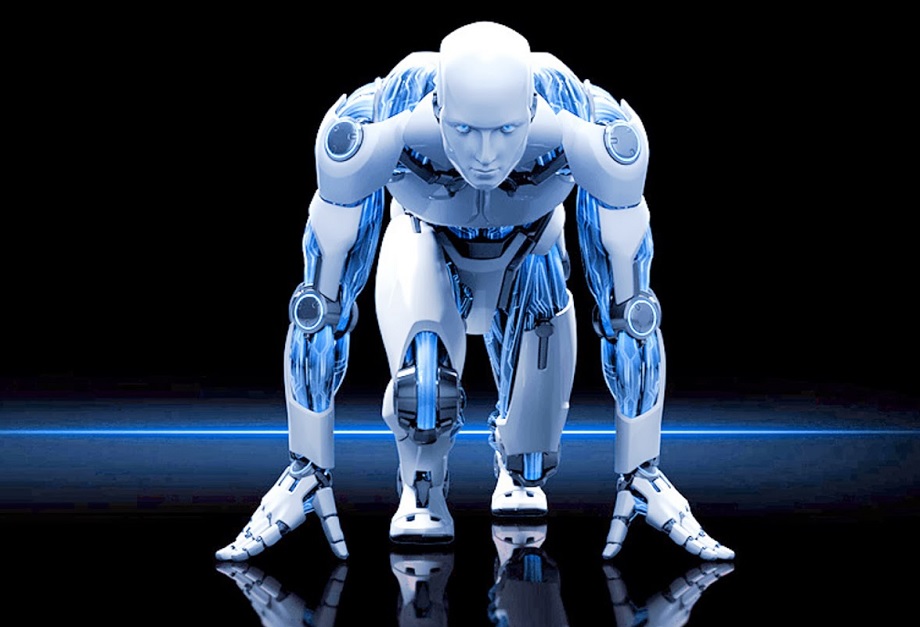
Characteristics Of Robotics
Appearance Of Robotics
A physical body is present in robots. They are supported in place by their body’s framework and moved by their mechanical components. Robots will be nothing more than software programs if they don’t have an appearance.
Brain Of Robotics
The on-board control unit also is a term for the brain in robots. This robot receives data and then gives orders as an output. Otherwise, the robot will just be a remote-controlled machine without this control device.
Sensors Of Robotics
These sensors are used in robots to collect information from the environment & deliver it to Brain. These sensors, in essence, have circuits in them that generate voltage.
Actuators Of Robotics
Actuators are devices that allow robots to move and components to move with the help of these robots. Motors, pumps, and compressors are examples of actuators. These actuators are told when and how to react or function by the brain.
Program Of Robotics
Robots can only function or react to directions provided to them in the manner of a program. This program merely informs the brain when to do certain things, such as move or make sounds. This program only instructs the robot on how to generate judgments based on sensor data.
Behavior Of Robotics
The robot’s behavior is determined by the programs that were created for it. Once the robot begins to move, it is easy to determine what type of programs is put within the robot.
Types Of Robots
Articulated Robotics
This robot’s distinguishing characteristic is its rotary joints, which range in number from two to ten or more. The rotary joint is attached to the arm, and each connection is referred to as an axis that allows for a variety of actions.
Cartesian Robotics
Gantry robots are another name for these. The Cartesian representation, i.e. x, y, & z, is used in these 3 joints. Wrists are fitted to such robots to give rotational mobility.
Cylindrical Robotics
At least one rotational connection and one prismatic connection are being used to attach the connections on these types of robots. Rotational connections are used to move along an axis, while prismatic connections offer linear motion.
Polar Robotics
Spherical robots are another name for these. The arm has a twisting connection that connects it to the basis, as well as two rotational joints and one linear joint.
Scara Robotics
Assembly robots are the most common use for these robots. Its arm is shaped like a cylinder. It features two parallel connections that give compliance in a single plane.
Delta Robotics
These robots have a spider-like structure to them. They’re made up of joint parallelograms joined on a shared basis. In a dome-shaped workplace, the parallelogram moves. They’re mostly used in the food and electronics industries.
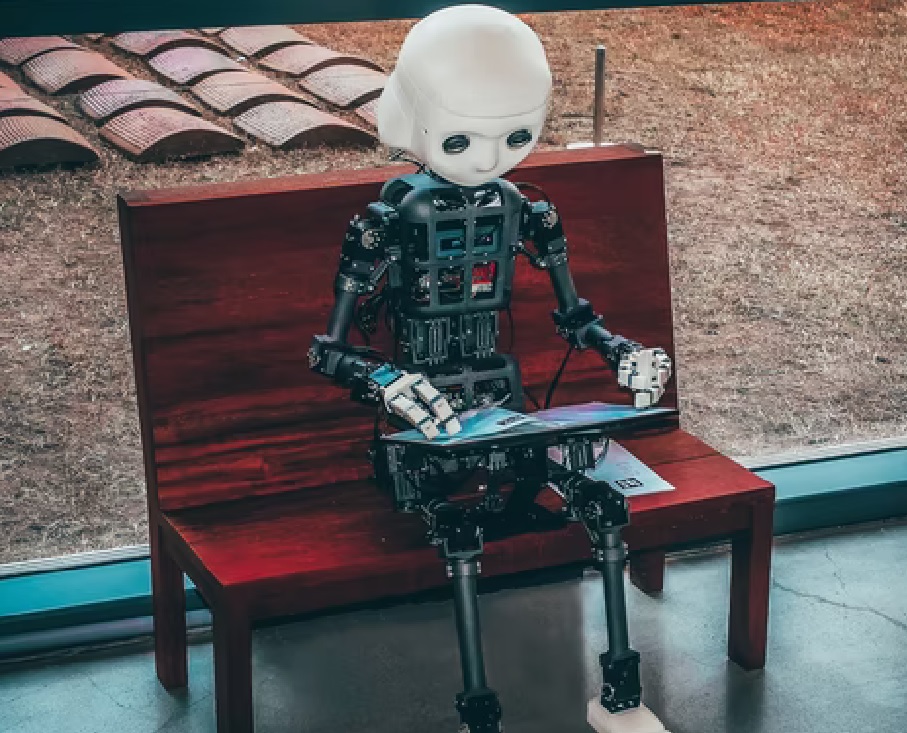
Other Types Of Robots
Pre-programmed Robots
Pre-programmed robots do basic, repetitive activities in a controlled setting. A robot part in an auto manufacturing line is an illustration of a pre-programmed robot. The arm has only one duty to accomplish – welding doors closed, putting a part into the motor, etc. — and its goal is to do it better, quicker, and better than a person could.
Humanoid Robots
Humanoid robots have the appearance and/or behavior of humans. These robots typically do human-like tasks (such as running, jumping, and carrying goods) and are occasionally made to resemble humans, with human-like features and attitudes. Hanson Robotics’ Sophia and Boston Dynamics’ Atlas are 2 other well humanoid robots.
Robots That Are Self-Aware
Human operators are not required for autonomous robots to function. These robots are typically built to perform jobs in open spaces without the need for human oversight. They’re one-of-a-kind in that they use sensors to detect the world surrounding them, then use choice-making mechanisms (typically a computer) to determine the best next activities based on their data & mission.
The Roomba vacuum cleaner, which performance to move freely across a home, is an illustration of an autonomous robot.
Teleoperated Robots
Teleoperated robots are semi-autonomous robots that may be controlled remotely via a wireless connection. These robots are typically used in remote locations with extreme weather, climate, and other factors. Human-controlled submarines were employed to repair undersea pipe breaks during the BP oil spill, and drones were used to locate landmines on a battleground as instances of teleoperated robots.
Augmenting Robots
Augmenting robots can either improve the current human capacity or exchange those that have been lost. The topic of robotics for human augmentation is one in which science fiction could become actuality very soon, having bots capable of redefining humankind by keeping humans quicker and tougher. Robotic prosthetic arms and prosthetic limbs use to lift heavy weights are illustrations of recent augmenting robots.
Advantages And Disadvantages Of Robotics
| Advantages | Disadvantages |
| The following are some of the benefits of using robots: | They require the power supply to continue operating. Factory workers may lose their employment if robots are able to change them. |
| They have access to knowledge that humans do not. | To keep them running all day, they require a lot of management. In addition, maintenance the robots can be costly. |
| They are capable of completing jobs accurately, efficiently, and quickly. | They can store a lot of information, but they aren’t as effective as our brains. |
| Because most robots are fully automated, they can execute a variety of jobs without the need for human intervention. | Robots can’t do anything other than run the program they’ve been given. |
| They can be employed for mining and dispatched to the nadirs of the Earth. | Robots are utilized in various factories to manufacture goods such as planes and car parts. |
| The most serious downside is that if a robot’s program falls into the wrong hands, it can inflict massive harm. | To keep them running all day, they require a lot of management. In addition, maintenance of the robots can be costly. |

Applications Of Robotics
- Various types of robots are capable of completing various jobs. Many robots, for illustration, are designed for manufacturing activities and are referred to as Assembly Robots since they are not suitable for any other task.
- Several manufacturers offer joint welding robots with their welding materials, and all these robots are referred to as Welding Robots.
- Several robots, on the other hand, are built for heavy-duty labor and are referred to as Heavy Duty Robots.
- Caterpillar has plans to build remote-controlled machinery and heavy robots by 2021, according to the company.
Herding is another task that a robot can perform. - In manufacturing, robots are progressively being employed more than people, with “Robots” accounting for more than half of all work in the auto sector.
- Military robots are mostly used
- Robots have been employed to clean up regions such as toxic waste and industrial waste, among other things.
- Agricultural robots.
- Household robots
- Domestic robots
- Nanorobots
- Swarm robots
- Robots have a broad array of applications, making them an excellent technology for the future. Soon, robots will be practically ubiquitous. They’ll be in our hospitals, hotels, and even on the roadways.
Manufacturing Of Robotics
The manufacturing sector is predicted only well and is the oldest application of robots. These robots and co-bots (bots that operate with people) test and manufacture things such as automobiles and industrial machinery. More than three million automated machines are currently in use, according to estimates.
Logistics Of Robotics
For most merchants and logistics organizations, shipping, managing, and quality inspection robots are becoming a have to. Logistics businesses utilize robots in facilities including on the road to significantly boost resource utilization because we now demand our products to come at lightning speed.
Read Also:-
- Artificial Intelligence | Definition, Examples, Types | Importance & Application of Artificial Intelligence
- How to use artificial intelligence and machine learning
- The Impact of Artificial Intelligence on Society
At the moment, robots are removing your things from shelves, carrying them all across the production floor, and wrapping them. Furthermore, the rise of last-mile robots (robots that carry packages to your door autonomously) ensures that you’ll have a facial expression meeting with a logistics bot in the not-too-distant future.
Home
It’s no longer a prediction. Robots can be found in our houses, assisting with household duties, informing us of our routines, and even entertaining our children. Roomba, the self-driving vacuum cleaner, is a very well illustration of a household robot. Furthermore, robots have advanced to the point that they can now perform everything including mowing grass independently to clean pools.
Travel
These self-driving cars aren’t simply a pipe dream anymore. Self-driving vehicles are getting popular, due to the confluence of data science and robotics. Tesla, Ford, Waymo, Volkswagen, and BMW are all focusing on the next generation of transportation, which will allow us to sit back, rest, and enjoy the experience. Uber and Lyft, two ridesharing businesses, are creating autonomous ridesharing vehicles that do not require humans to drive.
Healthcare
In the healthcare industry, robots have made tremendous achievements. From robot-assisted operations to bots that allow individuals to recover from injuries in physical therapy, these technological wonders are used in almost every facet of healthcare.
Toyota’s health practitioners, which assist patients regain their ability to move freely, and “TUG,” a robot built to independently stroll through a hospital and deliver anything from medications to clean linens, are these examples of robots in action in healthcare.
Pharmaceutical organizations have successfully used robots to assist quicken up the fight against COVID-19. These bots are being utilized to load and cover COVID-19 testing swabs, as well as some firms are also using them to make PPE and respiratory protection.
Function Of robotics
Independent Robots
Independent robots are able to execute fully automatically and without the intervention of a human operator. These usually necessitate more intensive programming, but they enable robots to perform hazardous, mundane, or otherwise difficult jobs, such as bomb dispersal and deep-sea travel, as well as factory automation. Robots that are self-sufficient have shown to be the most destructive to society, destroying low-wage occupations while opening up new opportunities for growth.
Dependent Robots
Non-autonomous dependency robots connect with humans to augment and enrich their already-existing functions. Although this is a comparatively recent sort of system that is continually being pushed into modern applications, improved prosthetics that are managed by the human brain are one type of dependent robot which has been accomplished.
In 2018, Johns Hopkins APL produced a renowned illustration of a reliant robot for a character named Johnny Matheny, who had his leg amputated just above his elbow. Matheny was equipped with such a Modular Prosthetic Limb (MPL) so that scientists could observe how it worked over time.
Electromyography, or impulses sent from his amputated leg that regulate the prosthetic, is used to operate the MPL. Matheny improved his command of the MPL over time, and the impulses supplied from his severed limb were smaller and less variable, resulting in increased reliability in its motions and enabling Matheny to execute delicate activities such as playing the piano.
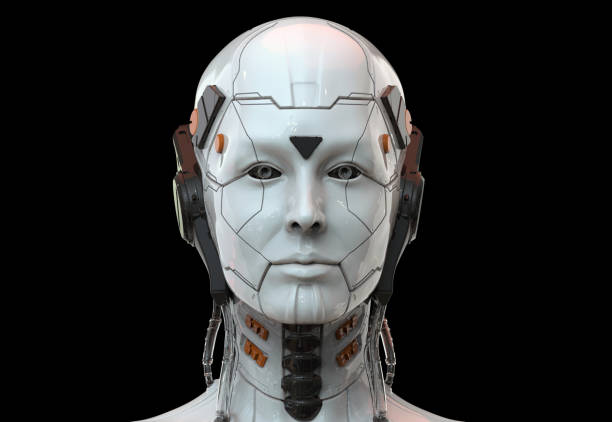
Robotics Advancements
The more modern robots on the market today can conduct operations adaptively, which means they can change the dimensions and other parameters to meet the needs.
A sewing machine is an effective example of an adaptable robot that can read the multiple dimensions of clothing size on an individual’s private card and afterward cut and stitch the appropriate dress fabric to the size suitable to the person.
In a broad sense, robotics is the ongoing effort of robotics designers to create machines involved in completing jobs as carefully as people can, as well as complex, difficult, and repetitive tasks that humans would rather avoid. The use of microprocessors and microcontrollers, combined with the clever utilization of servo motors, sensors, and actuators, has enabled progress in the quality of robotics.
Automation Of Robotics
The first thing that comes to mind when we think of robotics is automation. Except for initial software and command sequence, robots are known to accomplish activities independently without much human participation. Milk wrapping equipment was the first machine. It was the closest thing to a robot.
A roll of packing material ran through the machine, and half a liter of milk fell onto the roll each occasion, which was then sealed and cut by a machine action.
This contraption can serve as a rudimentary illustration of a robot. It repeats the specified number of actions with the same efficiency each time. It was designed and given the necessary materials before being turned on.
Robotics Locomotion
Locomotion is the mechanism that allows a robot to move around in its surroundings.
There Are Many Different Sorts Of Locomotions-
- Legged
- Wheeled
- Locomotion involving both legs and wheels
- Slip/skate with a track
Legged Locomotion
- While exhibiting walk, leap, trot, hop, climb up or down, etc., this style of movement requires more power.
- A movement necessitates the use of a larger number of motors. It works well on both rough and smooth ground, where the uneven or excessively smooth surface requires more force for wheeled mobility. Because of concerns with reliability, it is a little hard to execute.
- It has one, two, four, or six legs to choose from. Leg planning is needed for movement when a robot has several legs.
- The amount of legs a robot has determines the total variety of possible motion (a periodic series of lifting and releasing actions for each of the total limbs).
Locomotion On Wheels
- A movement can be accomplished with a less number of motors. It is a little easier to execute because there are fewer stability difficulties when there are more wheels. When compared to legged locomotion, it uses less energy.
- A standard wheel revolves around the wheel axle and the area of contact.
- The offset steering connection and the axle of the wheel are rotated by the castor wheel.
- Omni-wheel, a Swedish 45o, and Swedish 90o wheel revolves around the point of contact, the wheel axle, and the rollers.
- Balls or spherical wheel Omni – directional wheel, tough to construct technologically.
Locomotion On The Slip/Skid
- The vehicles in this category use tracks similar to those found on a tank. The robot is guided by rotating the tracks in the same or reverse direction at varied speeds. Because of the high contact zone between the track and the ground, it provides support.
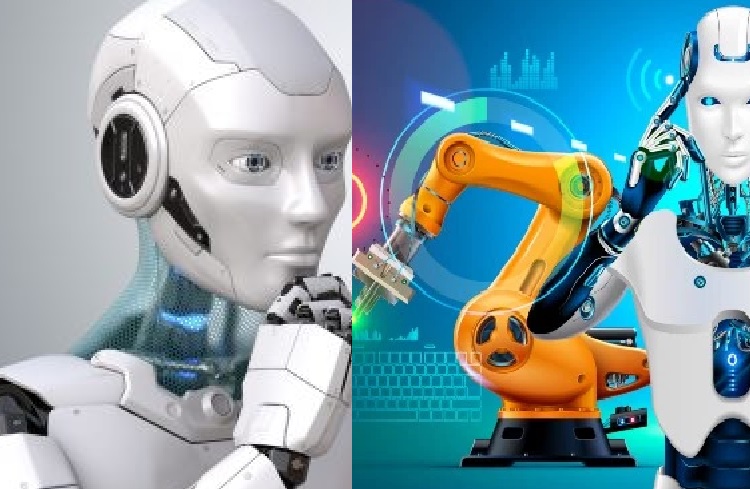
Vision Recognition By Computer
This is an AI technique that allows robots to see. In the areas of safety, security, health, access, and entertainment, computer vision is critical.
Computer vision extracts, analyses, and understands meaningful services from a specific picture or a set of images in an automated manner. This procedure entails the creation of algorithms for automated image interpretation.
Computer Vision System Hardware
This implies-
- Electricity supply
- A camera, for example, is an image acquisition device.
- A computer’s CPU and software
- Camera stands, wires, and connectors, as well as a display device for evaluating the system
Computer Vision Tasks
Optical Character Reader
Optical Character Reader (OCR) is a computer program that converts scanned documents into editable text. It comes with a scanner.
Face Recognition
Many high-tech cameras include this feature, which allows you to read a person’s face and capture that exact emotion. It allows a user to access software based on a correct match.
Recognized Objects
They’re in supermarkets, cameras, and high-end vehicles like BMW, GM, and Volvo.
Position Estimation
It involves calculating the location of an object in relation to a camera, such as the position of a tumor in a human’s body.
Computer Vision Application Domains
- Agriculture Self-driving vehicles
- Biometrics
- Recognize the characters
- Security, surveillance, and forensics
- Inspection of industrial quality
- Recognition of people’s faces
- Analysis of gestures
- Geoscience
- Medical illustrations
- Monitoring of pollution
- Controlling the process
- Remote sensing is a technique for gathering information from a
- Robotics
- Transport
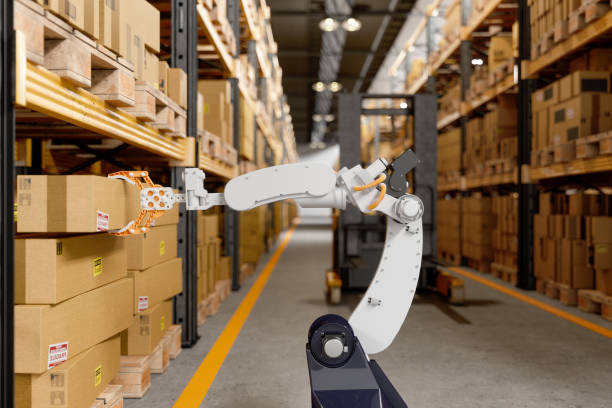
Is Software For Robots Considered Robotics?
A software robot, including a chatbot or a web browser, is a diverse type of computer program that does tasks automatically. Software robots, on the other hand, are not called robots as they only appear on the web and begin inside a computer. A machine must have a physical shape, as in a body or a chassis, to be termed a robot.
Future Perspectives Of Robotics
Now that the scope of robots has broadened, robots that can only function on preprogrammed instructions, regardless of the environment of the organization, will quickly become obsolete. Robots that are now being created can perceive their environment, act in accordance with what they see, and make decisions on their own about how to respond. The days of robots being aware of and sensitive to emotions, let alone expressing them, are long gone.
Conclusion
Robotics‘ numerous applications are used in multiple industries. Security guards, chefs, doctor’s assistants, customer service representatives, as well as a one-man army in battle are all using robots these times. Because of their accuracy and programming, robots can also be used to undertake a multitude of activities that are hazardous, monotonous, or repetitive for people.
Robots can perform all of the physically hard activities that humans find exceedingly difficult, and they are becoming increasingly intelligent as artificial intelligence progresses. Overall, robots may be a great helper to people and can address a variety of difficulties in various industries.






